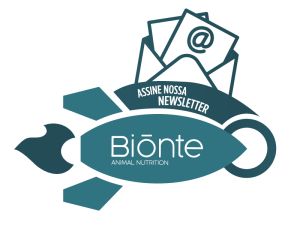Cell-free supernatants
They are substances that contain biologically active metabolites secreted by bacteria and yeasts into a surrounding fluid. These substrates can be extracted directly from cell cultures and each culture of microorganisms will show different activities or actions. In relation to yeasts, the supernatants of Saccharomyces cerevisiae and Saccharomyces boulardii have a positive effect in reversing the alteration of intestinal peristalsis caused by stress stimuli. In turn, S. boulardi has anti-inflammatory and antioxidant activity (De Marco et.al, 2018). It is worth mentioning that yeast supernatants are similar to bacterial ones, in terms of accelerating the wound-healing process and the regeneration of the intestinal barrier (Zólkiewicz et.al, 2020).
Exopolysaccharides
As it is well known, microorganisms have the ability to form biopolymers. These elements are released outside the bacterial cell wall and make up a heterogeneous group of substances called exopolysaccharides. The obtained group works as stabilizing, emulsifying and water-binding agents (Singh & Saini, 2017). In the field of exopolysaccharides, B-glucans are included, which improve the immune response against bacteria, viruses, parasites and neoplastic cells. The benefits of the use of exopolysaccharides not only cover the issue of immunity, but also influence the efficacy of probiotics, contributing to the adhesion of the microbiota in the intestinal epithelium. With its application, the bioavailability and absorption of carotenoids (substances that stand out for being antioxidants and anti-inflammatory) increases (Zólkiewicz et.al, 2020).
Enzymes and fragments of the cell wall
Several microorganisms are known for their ability to form defenses against reactive oxygen species (harmful to lipids, proteins, carbohydrates and nucleic acids). Usually, as a protective mechanism, enzymes are typically produced to mitigate the effects of ROS. The main enzymes are: glutathione peroxidase, peroxide dismutase, catalase, and NADH-oxidase. As for the components of the bacterial cell wall, they are mainly immunogenic (specific immune response), including bacterial lipoteichoic acid. It lies on gram-positive cell walls and can be released spontaneously into the environment (Zólkiewicz et.al, 2020).
Short-chain fatty acids
Short-chain fatty acids are a product obtained from the fermentation of vegetal polysaccharides from the intestinal microbiota. The main ones are acetic, propionic and butyric. Acetate comprises a role in the direct regulation of appetite via the central nervous system. Propionate is used as a substrate of gluconeogenesis in the liver to obtain energy. In addition, it inhibits the synthesis of cholesterol and has anti-inflammatory activity. Finally, butyrate, is the most important energy source of enterocytes, promoting the renewal of the intestinal epithelium and inducing tolerance to food (it increases the expression of immunosuppressive cytokines and regulates proinflammatory receptors).
Bacterial lysates and metabolites produced by the intestinal microbiota
The bacterial lysates are obtained by chemical or mechanical degradation of gram-positive and negative bacteria found in the environment. The bacterial components are used clinically based on the concept of the gut-lung axis, which refers to the functional connection between the gut immune system and the respiratory system. The mechanism of action of the bacterial lysates is to generate an immune response in Peyer’s patches of the small intestine, promoting the formation of mature lymphocytes that then migrate to the respiratory tract. In this way, the proliferating lymphocytes become involved in subsequent innate immune responses and secrete an extensive amount of IgA (Kearney, Dziekiewicz, & Feleszko, 2015). On the other hand, the intestinal microbiota is responsible for producing a variety of molecules such as vitamins, metabolites derived from phenolic compounds and aromatic amino acids; that are extracted and integrated as a postbiotic agent (Zólkiewicz et.al, 2020).




